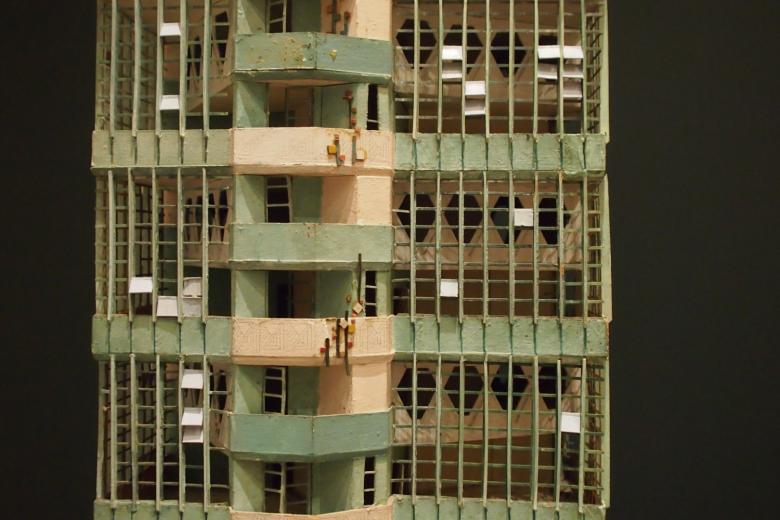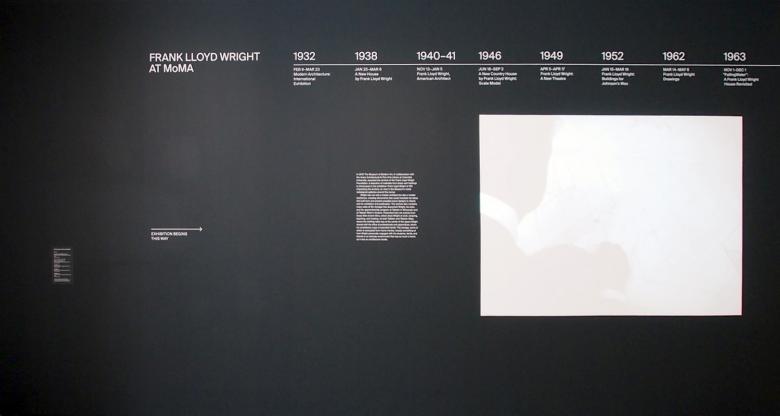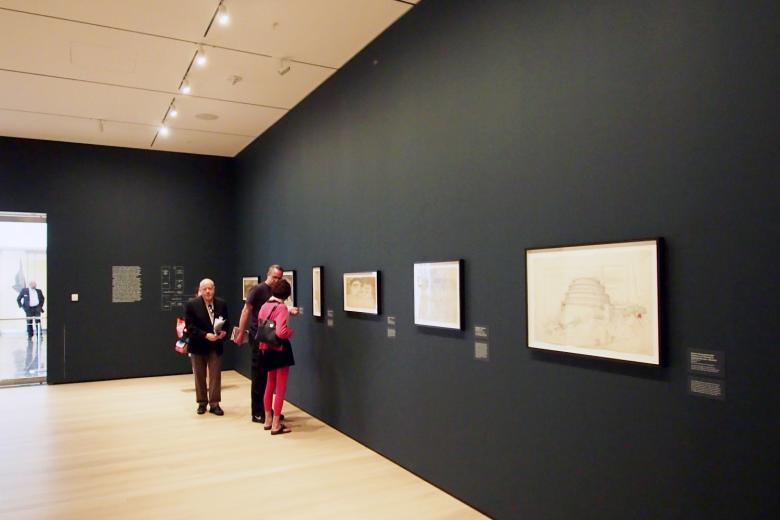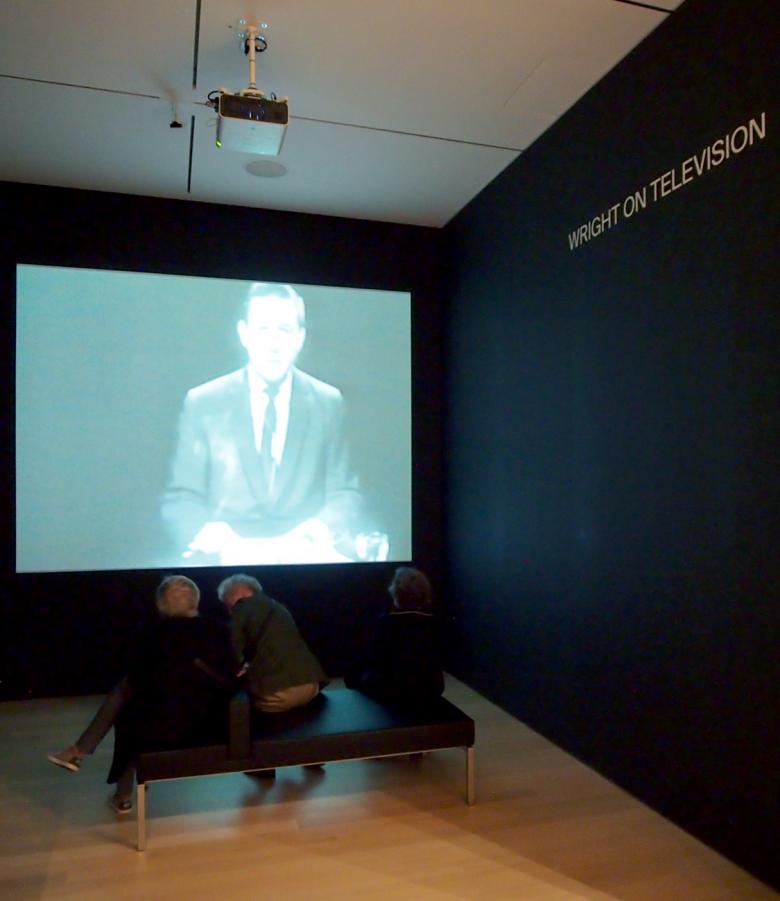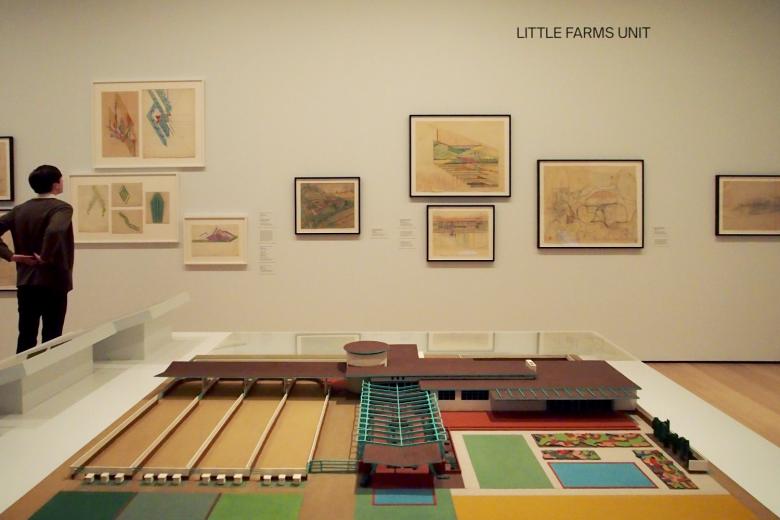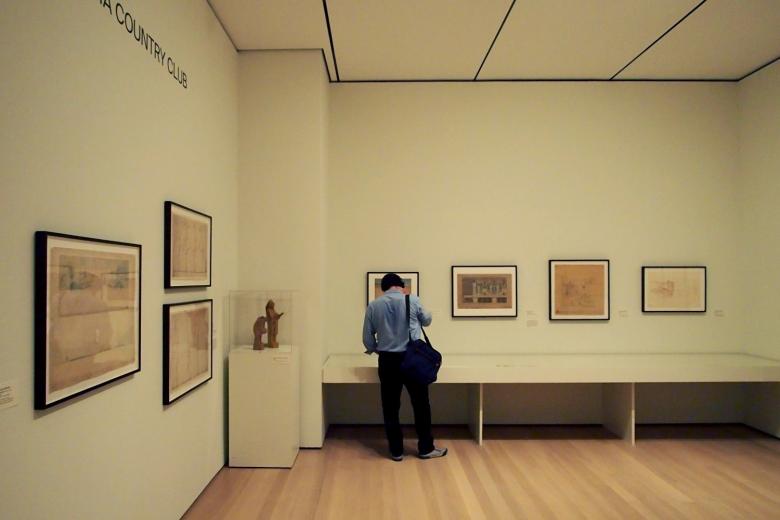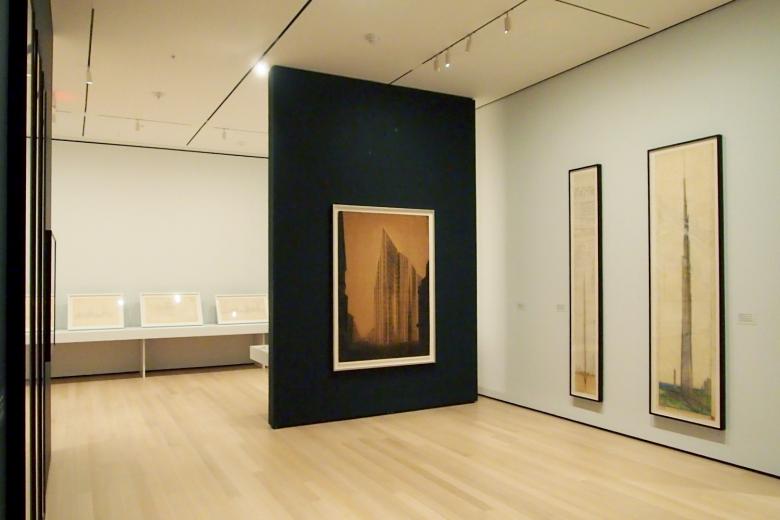Review: MoMA's 'Frank Lloyd Wright at 150'
John Hill
15. 六月 2017
Detail of partially restored model for unbuilt St. Mark's Tower, New York, 1927-29. (All photographs by John Hill/World-Architects)
How should an institution celebrate the sesquicentennial of Frank Lloyd Wright's birth? With a comprehensive overview of his long career? By focusing on one particular aspect, such as Wright's Prairie or Usonia houses?
For the Museum of Modern Art (MoMA), which co-owns the architect's voluminous archive with Columbia University's Avery Library, it could have gone in these or an almost infinite number of directions. But Barry Bergdoll – one of the few people with a foot in both sides of the archive, as a MoMA curator and a professor at Columbia – went a different route for Frank Lloyd Wright at 150: Unpacking the Archive. He asked a group of scholars and a museum conservator to dig through the archive's 55,000 drawings, 300,000 sheets of correspondence, 125,000 photographs, 2,700 manuscripts and numerous models, films, building fragments, and other artifacts and highlight a particular object or cluster of objects through a short video and a mini-exhibition within the larger whole. What is the result of such an approach?
The intro wall has a loop of Wright videos and a list of exhibitions at MoMA where he was the subject or played a prominent part. According to Bergdoll, Wright has been the most "lionized" architect at MoMA.
The first room within "Frank Lloyd Wright at 150" falls outside of the exhibition's format and chronologically presents drawings and a model of major Wright projects, most of which are not otherwise seen in the exhibition.
Housed in a renovated gallery within MoMA's original 1939 building (part of the first phase of DS+R's ongoing renovation), the exhibition appears just like any other: a series of rooms demarcated by simple, painted walls with mounted drawings and wall text, and the occasional vitrine and model. A map to the side of the entrance doors lays out the dozen rooms or sections that correspond to the scholarly explorations. More suggested than forced or required, the route through the exhibition moves in alphabetical order, from A to L, culminating in a thirteenth room that is devoted to Wright's appearances on television in the 1950s. This last part is visible in the distance immediately upon entering the exhibition and functions like a draw through the roughly chronological sections before it.
The last room "unpacks" Wright's appearances on a game show and talk show in the 1950s. The films push Wright's personality to the forefront of visitors' experiences.
Of the dozen mini-exhibitions that make up Frank Lloyd Wright at 150, half of them focus on specific projects while the other half consists of subjects that are broader, such as "ornament," "ecologies and landscapes," and "urbanism." From the former, the projects include, in order of the exhibition: the Imperial Hotel in Tokyo, the Little Farms Unit, the Nakoma Country Club, the Rosenwald School, the "Mile-High" skyscraper, and the American-Built System Houses. These projects, most of them unbuilt, are far from obvious choices. This reviewer was unaware of the Little Farms Unit, the Nakoma Country Club, and the Rosenwald School, three projects that make up the exhibition's D-E-F sections and, inadvertantly according to Bergdoll, find overlap through agriculture, indigenous culture, and African American society. Spanning a rougly ten-year period from the mid-1920s to mid-1930s, these projects offered Juliet Kinchin, Elizabeth Hawley, and Mabel Wilson, respectively, the chance to delve into the designs as well as Wright's views on politics and race.
Wright developed the Little Farms Unit at the height of the Great Depression. Part of an ambitious farm-to-market system, the materials on display "draw connections between Wright's ambitions and New Deal programs," according to the exhibition literature.
Like the Little Farms Unit, the Nakoma Country Club remained unbuilt. Designed in 1923 for a site near Madison, Wisconsin, Wright "appropriated native architectural forms, such as wigwams and tipis," a departure for the architect.
The lettered section given the most real estate is Bergdoll's own contribution, "Reading 'Mile-High'," about Wright's unsolicited and unprecedented 1956 design for a mile-high skyscraper. Wright is known for low, horizontal buildings rather than skyscrapers. In the latter camp can be counted merely a handful of designs, only a couple built: the H.C. Price Company Tower in Oklahoma (1956) and the Research Tower at Johnson Wax in Wisconsin (1950). These buildings, as well as the unbuilt St. Mark's Tower that is part of the exhibition, use the so-called "taproot" structural system, where floors are cantilevered from a central mast anchored deep in the ground. For the Mile-High Illinois, Wright took the system to its extreme, pushing it twice as high as today's world's tallest, the Burj Khalifa in Dubai. What was ludicrous in its day is not so far-fetched six decades years later, as the kilometer-high, Mile-High-looking Jeddah Tower moves toward a 2020 completion.
With "Reading 'Mile-High'," Bergdoll was able to fulfill one of his dreams: putting projects by Frank Lloyd Wright and Mies van der Rohe side by side. The latter includes Mies's Friedrichstrasse skyscraper project, also in MoMA's collection.
Wright's unbuilt St. Mark's Tower (New York City, 1927-29) sits at the end of the "Mile-High" gallery but is part of a section on the conservation of the architect's presentation models.
With such an ambitious and multi-faceted exhibition, a couple pieces are important for visitors who want to understand what was discovered through the unpacking; reading the wall text and looking at the drawings are not sufficient. First are the short films that accompany each of the dozen sections. These show the relevant scholar or museum conservator actually interacting with the artifacts in the archive. These revealing glances are especially helpful for non-architects or those without an already deep knowledge of Wright. People who know Wright's work fairly well – or those who want more than what is gained from watching a series of short films and trying to take in more than 400 drawings and other artifacts – should head to the gift shop for the second piece, the catalog that accompanies the exhibition. In it, the contributor's short essays hone in on those objects and the discoveries made through interacting with the archive. Often, exhibition catalogs pad images of the art or architecture on display with an essay or two. But here the essays are the meat of the publication and a necessary extension of the exhibition's revealing insights into some of Wright's overlooked designs.
Frank Lloyd Wright at 150: Unpacking the Archive is on display at MoMA in New York City until 1 October 2017.
相关文章
-
Review: MoMA's 'Frank Lloyd Wright at 150'
on 2017/6/15
-
MoMA Announces Major Wright Exhibition
on 2016/6/10
